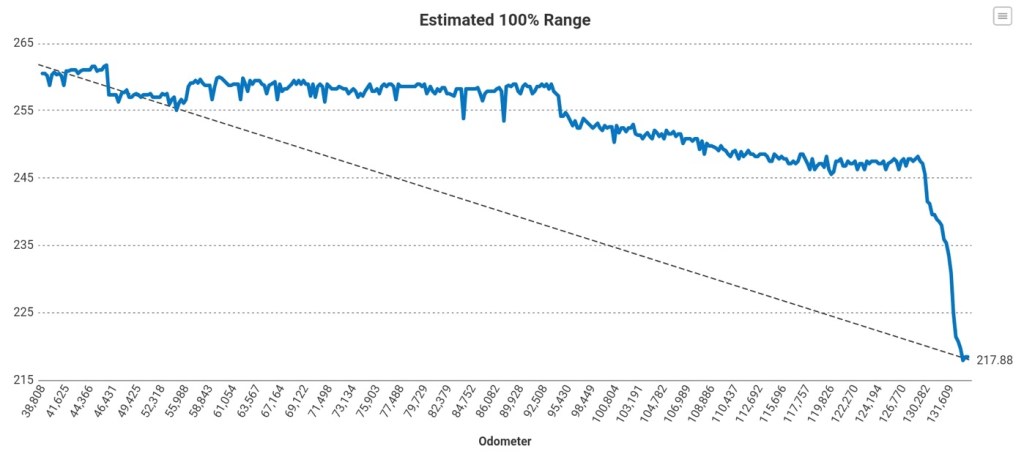Yeah, v1 90kwh packs (or 84kwh packs more like it), aren't getting more than 95kwh charge rates. It just isn't happening. Fun fact, we seem to be down to 76kwh nominal capacity now as well.
Speak for yourself. My 140k miles in 39 months has me down to 69.0 kWh max usable (nominal capacity) ... so basically a 75D including the 4.0 kWh "reserved by Tesla" and a few kWh of safety range but in reality it is more like 68.0 kWh or a 70D as that gives a tiny bit of safety range margin. Anymore, I just end up selecting a 70D in any of the trip planning sites or apps since I can't really drive more than 250 miles on a full charge yet Tesla keeps indicating this is "within tolerance." I'd sure like to know why the v1 battery was never replaced with the v2 or v3 battery though.
When rolling along at 310 Wh/mi that means I only have 219 miles max usable range of the 250-255 miles max range @ 100% SOC. Some of the drives are 320-330 Wh/mi or 206-212 miles of usable range but occasionally some good terrain and weather allows for 270-290 Wh/mi or 234 to 252 miles of usable range but definitely not with A/C running or some elevation gain or highway speeds.
Last week, I charged to 90% (230 miles for me) and did a Wallace, NC to Kill Devil Hills, NC run of 201.3 miles @ 289 Wh/mi in 3:37 hrs using moderate A/C and arrived with 16 miles or 6% remaining.
Then I charged up to 90% which took 65 minutes (charging graph below) and did a Kill Devil Hills, NC to Henderson, NC run of 197.2 miles @ 263 Wh/mi in 3:47 hrs using zero HVAC in 85-90 F temps and arrived with 39 miles or 15% remaining.
The charging session at the month-old Kill Devil Hills shows an initial start of 86 kW in a few minutes but a peak of 95 kW after 20 minutes and started to taper at 42% SOC (???) when 6 months ago or longer it would typically last until ~50-55% SOC before tapering. The next charging session at Henderson was from 15% to 60% and peaked at just 94 kW and started to taper at 45% SOC.



